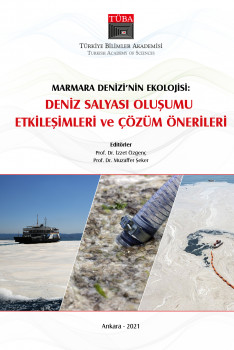Bacterial Levels in Mucilage; Sample Case of Preliminary Study in Istanbul Province, The Sea of Marmara

Bacterial Levels in Mucilage; Sample Case of Preliminary Study in Istanbul Province, The Sea of Marmara
The metabolic responses of bacteria against environmental changes shape the processes that will affect the sustainability of the ecosystem. For this reason, associating the bacteria in mucilage with the dissolved carbohydrate levels is important in terms of establishing links for bacterial consumption with the accumulated organic matter. In this study, preliminary data of bacteriological analyzes of mucilage and seawater samples surrounding the mucilage taken from different points in the coastal areas of the Sea of Marmara Istanbul Province, between April-May 2021 are presented. In the mucilage samples, total heterotrophic aerobic bacteria (HAB) levels, determined by using the spread plate technique, recorded as 63x1012 ±1.6/ml on average and the highest HAB level as 74x1014 ±1.24/ml. Indicator bacteria indicating the presence of pathogenic bacteria found above the limit values in all samples. The mean total dissolved carbohydrate concentration in the mucilage and surrounding sea water recorded as 68±0.5 and 29.5±00.3 mg/L, respectively. Preliminary bacteriological data obtained were compared with our bacteriological data in mucilage observed in the Marmara Sea in 2007 and 2010, and the HAB levels detected higher in the mucilage sample than in sea water evaluated as bacterial affinity to the dense polysaccharide content in the mucilage. Our preliminary findings suggest that bacterial consumption of mucilage caused by accumulated/ slow degrading organic matter should be considered in conjunction with other components in the biomass.
